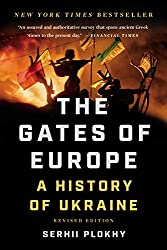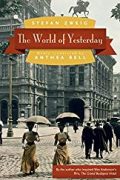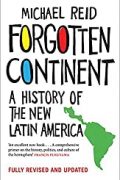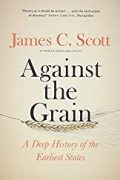
Rating: 7.6/10.
Book about the history of Ukraine from ancient times until 2021, when the book was written. Ukraine was always on the frontier between Europe and Asia, for most of his history, the area was known as “Rus” or “Little Russia”, but they rarely ever were able to form their own state, rather they were constantly subjugated by neighboring groups. During the Roman and Greek times, the area was known but was at the edge of the known world; the inhabitants there were considered barbarians. Slavic people migrated into the area around the 6th century; they were the first sedentary agriculturalists, unlike the nomadic people who they displaced.
The Vikings invaded the area in the 9th century, the area was an easy target because it had easily navigable rivers like the Dnieper, and the Slavic people there were not politically unified. The Norse invaders were absorbed into the local Slavic people and established a new kingdom of Kievan Rus. Under the princes Volodimir the Great and Yaroslav the Wise, the Kingdom expanded and develop cultural connections with the Byzantine empire and adopted Christianity as its religion. However, the kingdom quickly broke apart after the death of Yaroslav, similar to the Carolingian Empire in France.
The Mongols invaded the region in this 13th century, and the scattered Kievan principalities were, no match for the Golden Horde. But rather than devastation, the kingdom of Galicia-Volhynia became a vassal state to the Mongols. The kingdom later collapsed when invaded by Poland and Lithuania in the 14th century, and this state took control over the area for the next few hundred years.
The Cossacks emerged in the 15th to 16th centuries, as folk heroes who defended Ukraine from foreign invaders, mostly Ottoman slave traders who liked to raid the area. Later, in 1648, the Cossacks led an uprising, allying with the Tartars to defeat the Polish-Lithuanian Commonwealth, However, the Tatar allies be proved to be unreliable when they tried to expand further. The uprising led to a period of power struggles between the Cossacks, Poland and the Muscovites (based in Moscow), eventually leading to a loss of control for the Cossacks, who largely get absorbed into the Moscow state (although retaining some of their own identity).
In the 18th and 19th centuries, the Rus territory was either occupied by foreign states or split up among several states. Under Catherine the Great, the Russian Empire annexed a large part of Ukraine and Crimea and brought in many immigrants into the region. Later, Ukraine was split in half between the Russian Empire and Austria-Hungary; around this time, Ukrainians (as well as the Polish) became more aware of their national identities and started many uprisings against their dominating states. Russia tended to crack down more on Ukrainian cultural expression, while the Austria-Hungary side with Galicia was more accepting.
In 1905, Ukrainians pushed their own national identity and started a rebellion against the Russians. Many empires were weakening around this time, before WW1, including the Russian Empire, which led Ukraine to declare independence, but the new state was ineffective and shortly collapsed. There were several more attempts to establish a Ukrainian state in the 1910s, but they were all unsuccessful at unifying the eastern and western halves, and Ukraine ended up being divided between four countries: Russia, Poland, Romania and Czechoslovakia. Each one of them tried to push their own language and culture onto the Ukrainians, who never got a chance to form their own national identity around a nation state.
In the early 1930s, Stalin forced collectivization in Ukraine, deporting the kulaks (richer peasants) to Siberia while taking away grain from the countryside and causing a famine in 1932, now considered a genocide. When Hitler invaded the Soviet Union in the 1940s, many Ukrainians thought welcomed the invasion, hoping in Germany would be better than Soviet rule, but this turned out to be not the case. Eventually the tide of the war turned and the Soviets gained upper hand over Hitler, regaining all of the land that had been lost, and taking over a large part of Eastern Europe; Ukraine was then fully integrated into the Soviet state.
Under Khrushchev, the policies were more friendly and focused towards people’s well-being compared to Stalin, but the Soviet Union struggled to maintain economic production, developing into a mostly oil export oriented economy and weakening in the 1980s after many protests, and collapsed in 1991. Ukraine then voted heavily for independence from Russia, yet after independence, even though it transitioned to a democracy, Ukraine struggled to grow economically in the 1990s and 2000s.
In recent years, Putin has tried to take control over Ukraine, first through political means (installing pro-Russian politicians), then through a military invasion of Crimea in 2014. This has so far been unsuccessful: the vast majority of Ukrainians are against Russia, even many of those who are ethnically Russians. Ukraine is aligning itself increasingly towards the West, which they rely on to fend against Russian aggression. The book ends in 2021 just after the election of Volodymyr Zelenskyy, but before the current Russian invasion.
The story of Ukraine is a complicated one, for almost all of its history (except for the 10th century and the last 30 years), it has been dominated by more powerful states, yet it has always maintained its own national identity and culture, thus the opening lines of the national anthem, “Ukraine has not yet perished”. Overall, this book gives a lot of details, probably too many minor details for a casual reader, so you need to pay attention to the most significant events or else get lost in the weeds. Mostly, at the end of each chapter, the author does a decent job of tying together what has happened in the last century into a coherent narrative.



